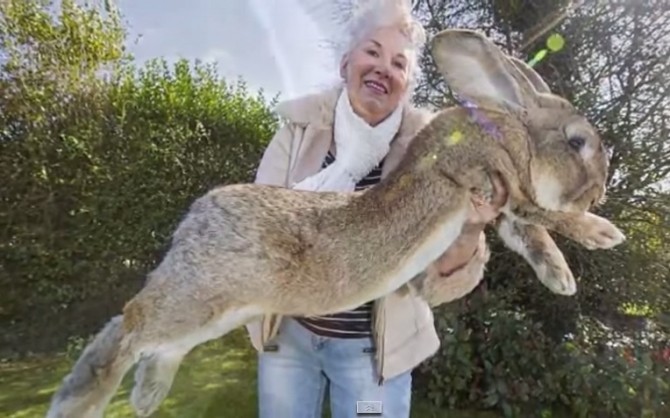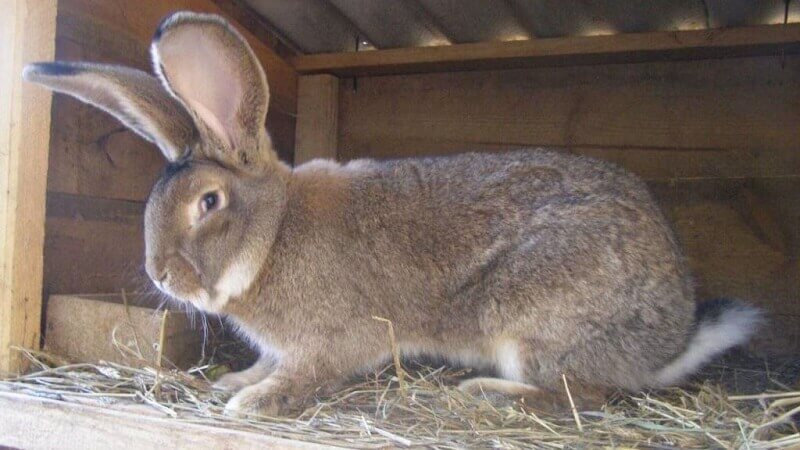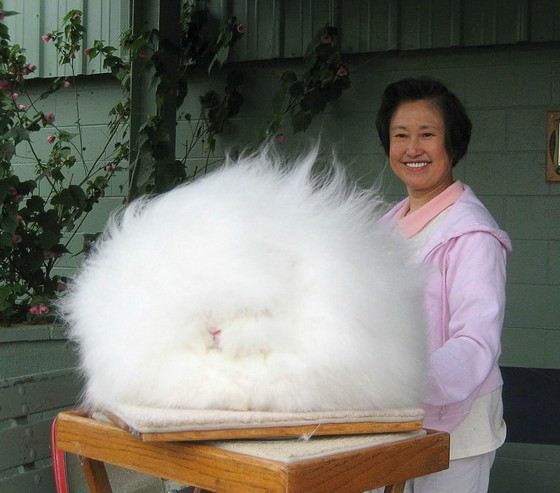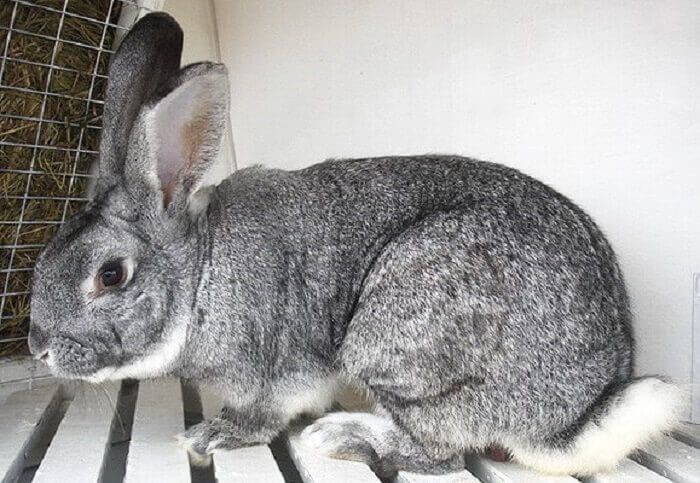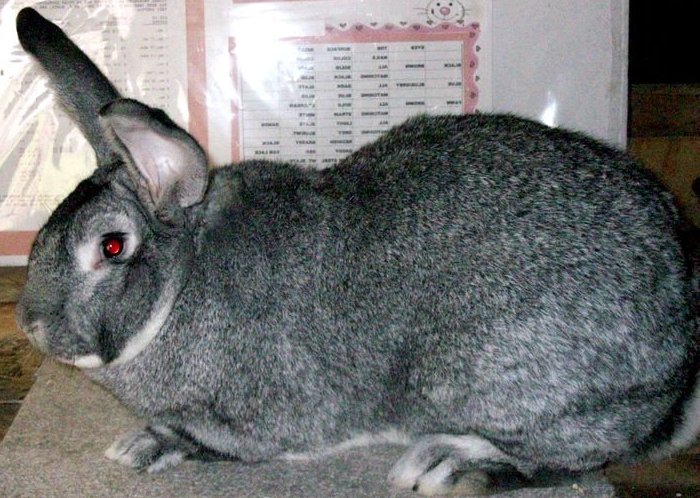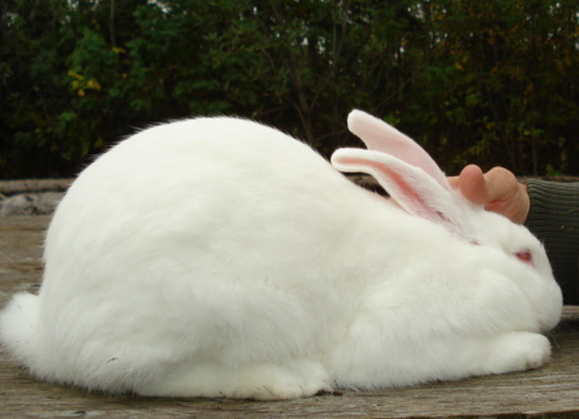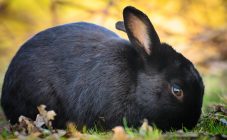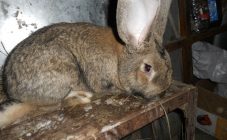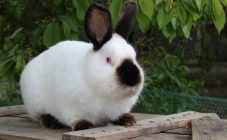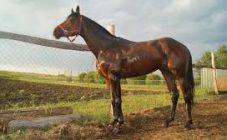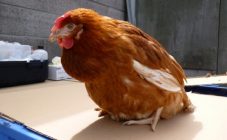Ralph is the largest rabbit in the world, officially registered in the Guinness Book of Records. The rabbit lives in the UK as a pet. The giant rabbit weighs as much as a 3-year-old child. However, he is not alone. Today in the world there are a great many breeds - from dwarf to truly gigantic. Many representatives have the status of world record holders.
Large rabbits, the breed of which fits the description of "giant", exist all over the world, there are about ten species. However, the most popular of them are the following breeds:
- Belgian giant (Flanders).
- Giant Angora.
- Soviet chinchilla.
- Gray giant.
- White giant.
- A giant butterfly.
Rabbits - record holders
Among the large breeds, there are representatives who have received recognition for various records. The most famous is the current record holder named Ralph. The animal has the weight of a child of 3 years old and lives as a pet in one of the British families. He is 4 years old, but he has already been awarded the title of the largest and fattest rabbit in the world. Its weight is over 22 kg, length is more than 1 meter. This animal has a good pedigree, as its parents at one time earned the titles of the largest on the planet.
However, this animal for some time lost its records, which were broken by its other relative, the rabbit Darius, who got into the Guinness Book of Records in 2010. But Ralph won back his achievement when he overtook Darius in growth. Other record holders are also known in the world - these are Roberto, Alice and Amy. Each of the listed individuals weighed more than 10 kg.
The largest rabbits
The largest breed of rabbits is the Belgian giant, which has another name - Flandre. This species is the ancestor of several varieties of purebred giant rabbits. They are about the size of a small dog. Their main advantage is not only a calm, friendly disposition, but also the excellent qualities of the skin and meat. The huge rabbit comes from the Belgian region of Flanders.
The standard weight of this breed is 5.5 kg, but there are individuals with a weight of 8 - 12 kg, with a relatively small height - 65-70 cm. They have a slightly elongated body with good muscles and strong strong legs. Large head with large fleshy ears. Puberty occurs at the age of 8 - 9 months. A rabbit can bring up to 16 young rabbits, but on average 6 - 8 babies are born in one round.
Their content must be approached responsibly, as they are demanding in their care. Although they are resistant to various diseases, they need to be well cared for in terms of hygiene.
The giant angora got the popular name "bonus rabbit" because of its special fluffiness. The wool of these animals is most often used in the manufacture of warm clothes, since it is several times warmer than sheep's and softer.
It is necessary to carefully monitor the fur of the animals, wash and cut the excess. When caring for themselves, rabbits are able to swallow it, but they do not regurgitate wool like cats, so over time it completely fills the stomach, which can lead to the death of the animal.
The first Angora breeds were divided into English and French.The German breed, which existed along with them, did not receive recognition due to a lack of genetic qualities.
Louise Walsh from the USA, Massachusetts is considered to be the ancestor of the giant Angora - she decided to breed a large breed with high wool. To do this, she crossed the German Angora with large commercial breeds, which subsequently led to the emergence of this rare species of rabbit.
The result is large animals weighing about 5 kg with increased hairiness, which is practically absent on the muzzle. They have a calm character. The breed is quite rare, not for widespread use, therefore, breeders do not advise beginners to start it, since some peculiarities must be taken into account when caring for them.
The Soviet chinchilla is one of the most beautiful breeds of the rabbit species due to its delicate soft fur, similar in structure to that of a chinchilla. Most often they are bred for meat and fur, but sometimes they are kept as pets.
This breed was officially registered in Russia in 1963. Bred by crossing the usual Soviet chinchilla with the White Giants breed to improve the quality of fur, meat and better adaptability to climate change.
These rabbits are distinguished by their original fur color - a silvery blue tint. Most valuable for the quality of their fur, which is in great demand. Large sizes with an average body weight of 5 - 6 kg, but there are also more - up to 8 kg. The body length reaches 65 cm. The skeletal system and the general constitution of the body are well developed.
Rabbits usually adapt well to housing conditions and changes in climatic conditions, but in hot and cold weather, it is worth adhering to some rules of care:
- In summer, make sure that the animals are not exposed to direct sunlight - their rooms should not overheat.
- In a cold season, the premises should be insulated without drafts.
The gray giant was registered as a separate breed in 1953 in the USSR. Breeding of the breed began in Ukraine, in the Poltava region, by crossing Belgian flanders with local rabbits.
It is a shorthaired species that is bred for its meat and hides. They have a broad back, long legs and a rounded croup. They are 55 - 66 cm long and weigh from 4 to 7 kg. The meat of the Gray Giant is famous for its dietary properties, it can be consumed by people with problems of the gastrointestinal tract. In content, they are unpretentious, adapt well to changes in climatic conditions.
The main guarantee of their successful maintenance is the purity of the cells. It should be taken into account that the premises or cells in which they will be kept are spacious, without drafts and not exposed to direct sunlight.
The giant butterfly is a breed that differs from other species of rabbit in its originality of color. They are white in color with symmetrically spaced black spots. They are bred not only because of the unusual color of the skins, but also to obtain good quality meat.
They come from England, in the last century they were brought to Russia, where they were adapted by selection to more severe living conditions. To do this, they were crossed with such breeds as the Gray Giant, Soviet Chinchilla and Flandre. The result is a larger, resistant breed that has gone from decorative to commercial.
The purebred breed of these animals has a symmetrical color along the length of the skin and on the sides, which are not in contact with the dark stripe on the spine. They reach 55 - 60 cm in length and weigh about 4.5 kg. They are distinguished by a powerful torso.Despite the fact that any conditions are suitable for their containment, living in cages is best suited to them in order to control some processes, such as mating. They have a calm, friendly disposition, so these handsome men are often kept as pets.
They are large in size, weighing on average about 5 kg. This is a rabbit with large ears, the length of which reaches 12 cm, the head is narrow. The fur is soft and elastic. Experienced farmers advise even beginners to start these animals, since caring for them does not require much effort.
Care and maintenance of giant rabbits
Large breed rabbits can be kept in different ways: in cages, pens, semi-free methods. However, when caring for them, it is important to consider some features.
Most giant rabbits are unpretentious in keeping, since almost all of these breeds were bred specifically for more convenient care. They are resistant to diseases, but it is important to take into account the quality of the content, to ensure that there is no moisture in the cells and pens, no direct sunlight and no drafts.
With the right diet, giant rabbits are more productive and fertile. If the food is chosen incorrectly, their reproductive qualities may drop to zero.
Whichever breed farmers choose, it is important to take into account the peculiarities of caring for them. In addition, before starting these animals, it is worth considering the climatic features of the region of their future residence and the ultimate goal of their breeding. The success of the planned business depends on this.
